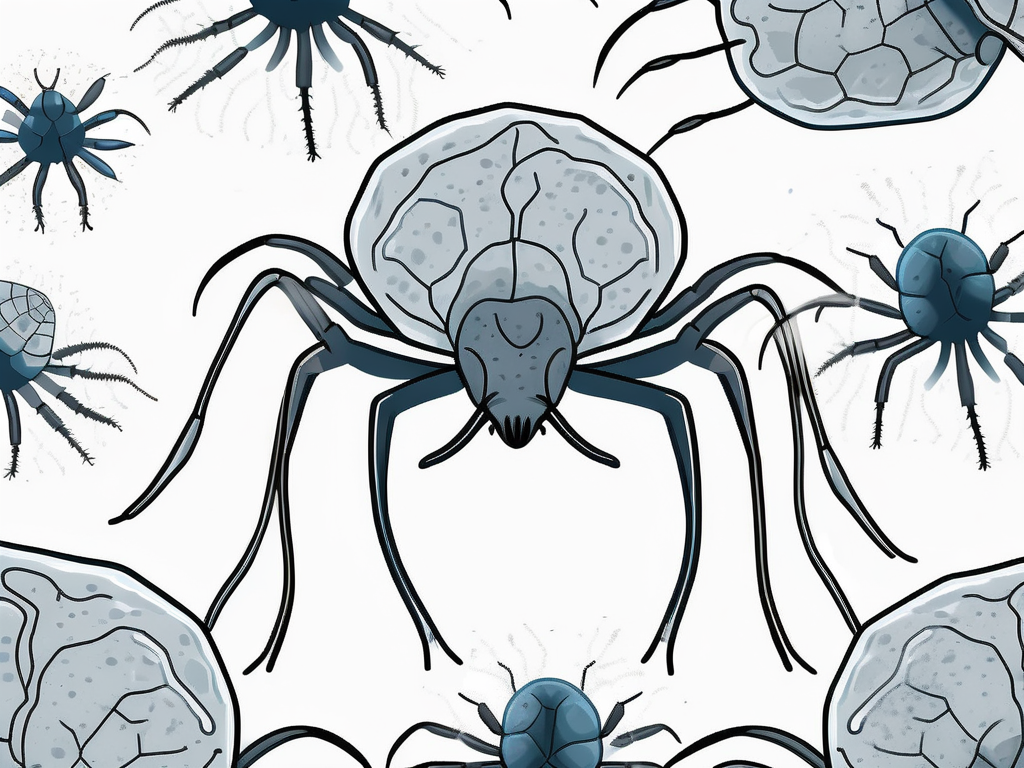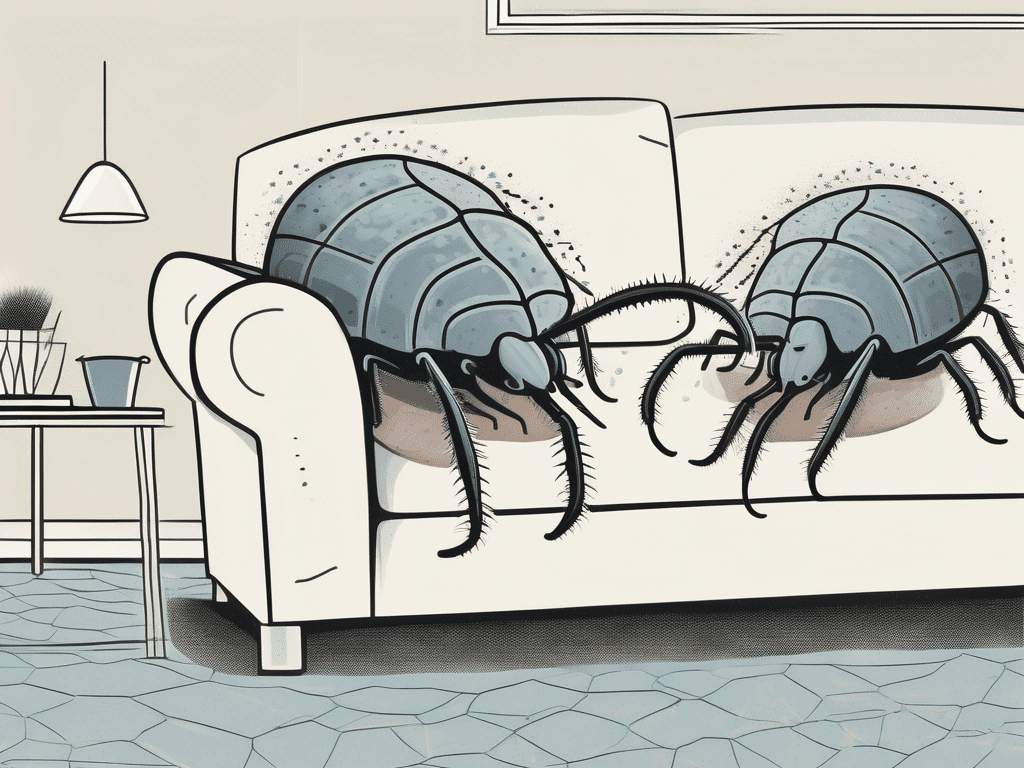Dust mites are microscopic creatures that are commonly found in homes, particularly in areas with high humidity and temperature. They are a common cause of allergies and can significantly impact indoor air quality. Understanding dust mites and their impact on indoor air quality is crucial for maintaining a healthy living environment.
This glossary article will delve into the world of dust mites, exploring their biology, habitats, and the health risks they pose. We will also discuss how dust mites affect indoor air quality and the measures that can be taken to control their population in homes.
Understanding Dust Mites
Dust mites, scientifically known as Dermatophagoides, are tiny arachnids that are invisible to the naked eye. They thrive in warm, humid environments and feed on dead skin cells shed by humans and pets. Despite their small size, dust mites can have a significant impact on human health, particularly for those with allergies or asthma.

There are two common species of dust mites: Dermatophagoides farinae and Dermatophagoides pteronyssinus. Both species are found worldwide and can survive in a wide range of climates, although they prefer environments with high humidity and temperatures between 68 to 77 degrees Fahrenheit (20 to 25 degrees Celsius).
Biology of Dust Mites
Dust mites have a simple life cycle that includes four stages: egg, larva, nymph, and adult. The entire life cycle from egg to adult takes approximately one month to complete. Adult dust mites have a lifespan of two to three months, during which females can lay up to 100 eggs.
Dust mites do not bite or sting, but they can cause allergic reactions in susceptible individuals. This is because their feces and decomposing bodies contain proteins that can trigger an immune response in humans. These allergenic proteins can become airborne and be inhaled, leading to symptoms such as sneezing, runny nose, and itchy eyes.
Habitats of Dust Mites
Dust mites are ubiquitous and can be found in virtually all indoor environments. However, they are most commonly found in areas where human dander (dead skin cells) is abundant. This includes bedding, upholstered furniture, carpets, and stuffed toys. Dust mites can also be found in dust particles that accumulate in corners and under furniture.
Humidity is a critical factor in dust mite survival. Dust mites absorb moisture from the air through their exoskeleton, so they thrive in humid environments. In contrast, they struggle to survive in dry conditions. Therefore, controlling humidity can be an effective strategy for managing dust mite populations.
Impact on Indoor Air Quality
Dust mites can significantly impact indoor air quality. Their feces and decomposing bodies can become airborne and be inhaled by humans, leading to allergic reactions and asthma attacks. Furthermore, dust mites can contribute to the accumulation of dust in homes, which can also degrade air quality.

Indoor air quality is a crucial aspect of human health. Poor indoor air quality can lead to a range of health issues, from minor irritations like headaches and fatigue to serious conditions like respiratory diseases and heart problems. Therefore, controlling dust mites is an essential part of maintaining good indoor air quality.
Allergenic Properties of Dust Mites
Dust mites are one of the most common causes of indoor allergies. The allergenic proteins in their feces and decomposing bodies can trigger an immune response in susceptible individuals, leading to symptoms such as sneezing, runny nose, itchy eyes, and skin rashes. In severe cases, exposure to dust mites can trigger asthma attacks.
It’s important to note that not everyone is allergic to dust mites. However, for those who are, exposure to dust mites can significantly degrade their quality of life. Therefore, it’s crucial for individuals with dust mite allergies to take steps to reduce their exposure to these microscopic creatures.
Contribution to Dust Accumulation
Dust mites can contribute to the accumulation of dust in homes. As they feed on dead skin cells, they produce feces that can become part of the dust in a home. Furthermore, as dust mites die, their decomposing bodies can also become part of the dust.
This dust can become airborne and be inhaled by humans, leading to health issues such as allergies and asthma. Furthermore, the accumulation of dust can degrade the aesthetic appeal of a home and require frequent cleaning. Therefore, controlling dust mites can help to reduce dust accumulation and improve indoor air quality.
Controlling Dust Mites
Controlling dust mites can be challenging due to their small size and ability to thrive in a wide range of environments. However, there are several strategies that can be effective in reducing dust mite populations. These include controlling humidity, regular cleaning, and using dust mite-proof covers for bedding.
It’s important to note that it’s impossible to completely eliminate dust mites from a home. However, by taking steps to reduce their populations, it’s possible to mitigate their impact on indoor air quality and human health.
Humidity Control
As mentioned earlier, dust mites absorb moisture from the air through their exoskeleton, so they thrive in humid environments. Therefore, controlling humidity can be an effective strategy for managing dust mite populations. This can be achieved by using dehumidifiers or air conditioners to maintain indoor humidity levels below 50%.
It’s also important to avoid activities that can increase indoor humidity, such as drying clothes indoors or taking long, hot showers. Furthermore, improving ventilation in a home can help to reduce humidity and make the environment less hospitable for dust mites.
Regular Cleaning
Regular cleaning can help to reduce dust mite populations by removing their food source (dead skin cells) and their habitats (dust). This includes vacuuming carpets and upholstered furniture, washing bedding in hot water, and dusting surfaces with a damp cloth.
It’s important to note that dusting with a dry cloth can stir up dust mite allergens and make them airborne, so it’s recommended to use a damp cloth or a vacuum with a HEPA filter. Furthermore, individuals with dust mite allergies should wear a mask while cleaning to avoid inhaling allergens.
Dust Mite-Proof Covers
Using dust mite-proof covers for bedding can help to reduce dust mite populations by creating a physical barrier that prevents them from accessing their food source. These covers are made from tightly woven fabric that dust mites cannot penetrate.
It’s recommended to use dust mite-proof covers for mattresses, pillows, and duvets. These covers should be washed regularly in hot water to remove any dust mites or allergens that may have accumulated on the surface.
Conclusion
Dust mites are a common cause of indoor allergies and can significantly impact indoor air quality. However, by understanding their biology and habitats, and by taking steps to control their populations, it’s possible to mitigate their impact on human health and maintain a healthy living environment.

While it’s impossible to completely eliminate dust mites from a home, reducing their populations can help to improve indoor air quality and reduce the risk of allergies and asthma. Therefore, dust mite control should be an integral part of any indoor air quality management strategy.






